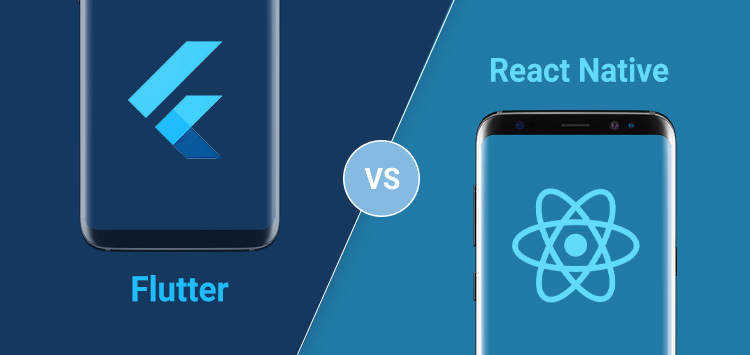Flutter vs. React Native: A Mobile App Development Duel

Flutter: Popularly known to be the framework facilitating the development of cross-platform apps. With a rich repository of UI toolkit, it enables the creation of a feature-rich mobile application.
React Native: A Facebook-owned and JavaScript-based app development framework, React Native enables developers to build native iOS and Android apps. As it utilizes JavaScript, the framework has a steeper learning curve and is easy to adapt.
With Flutter or React Native, businesses can aim for quick launch mobile apps, with single codebase that runs on both Android and iOS platforms.
Digitization has taken its toll and automation of each & every business process has taken over everything. And, strategizing ideas to build a Field service app or a B2C app is definitely an excel move. But before moving on, one thing that you need to be sure of - is the Mobile app development framework. Let us help you choose between React Native and Flutter for your application development.
Flutter or React Native: Which Mobile App development framework to choose
Flutter: Using Cupertino & Material design widgets, it adapts the nature design for Android and iOS platforms – for the most-updated as well as old OS. The flutter app development framework enables your mobile app to look more like native solutions.
React Native: When you use React Native, the near-identical native experience can be delivered to the Android and iOS users, but to do the same for old or un-updated OS, you will have to use third-party design libraries. Hot Reload Feature:
Mobile App Development Time
Flutter: The fact that flutter deploys a single code for both the platforms, the development time is reduced to half.
React Native: Based on JavaScript, it enables coding statically typed programming language and builds apps that run seamlessly over both Android and iOS. This further slice the time taken for React Native developers to build apps, optimizing the entire app development process.
Learning Curve & Ecosystem
Flutter: Launched back in 2011, Dart was introduced by Google and is the primary language for Flutter app development. It now has over 1450 packages available and its ecosystem is driving great momentum with the community.
React Native: As one of the most popular languages, React Native framework apps are built on JavaScript. It has a steeper learning curve and has been here for a long time. This matured framework offers 5 times more the number of packages when compared to what Flutter has to offer.
Efficiency of Code Base
Flutter: The same Flutter codebase works well with the Android, iOS and web platform pretty well. With it, you won’t need separate implementation. Not only has it reduced the coding time, but the testing time and projects’ cost too.
React Native: It allows the developers to use the same codebase for Native iOS and Android applications. It uses the components offered by the react-native library for app development.
Making the Call
If you look at this, both Flutter and React Native Mobile App development frameworks are supreme in their own respect. There are a few common features in them, e.g. hot reload feature that enables developers to make changes in the code in real-time. This accelerates the pace at which updates are released and bugs fixed.
All-in-all, the choice largely depends upon your project requirements and the tech stack.